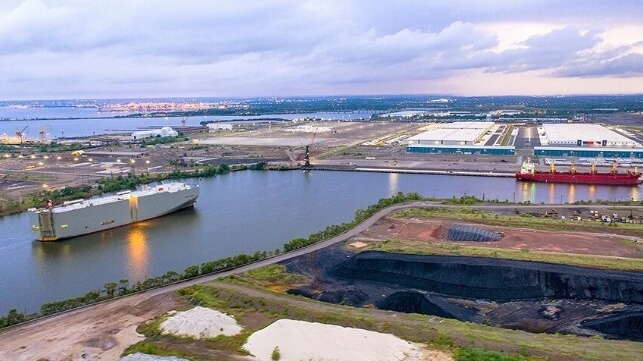MSC’s TIL Invests in New Baltimore Sparrows Point Container Terminal

Plans were announced for the development of another major container terminal serving the Port of Baltimore and the U.S. East Coast to be located at the former Bethlehem Steel site at Sparrows Point. MSC’s Terminal Investment Limited (TIL), is partnering with Tradepoint Atlantic, the developer of the site, for the container terminal which will increase by more than 50 percent the space of container operations within the port.
Announcing plans for the new container terminal the companies said that it would give Baltimore’s port a major competitive advantage along the U.S. Eastern Seaboard. The new facility will be the next phase in the development of the former site that once housed Bethlehem Steel’s operations including a large shipyard and the overall expansion of the Port of Baltimore’s operations.
The addition of the new terminal, which will be located on 165 acres within the industrial park, comes at a time when the U.S. East Coast ports have been struggling to keep up with the surge in container volumes. There have been widespread reports of long waits for containerships calling at ports ranging from New York/New Jersey to Charleston, and Savannah, while ports along the coast from Boston to Jacksonville have been expanding to provide alternative capacity for the container shipping lines.
“This is one of the most important and consequential announcements we have made since setting out with our initial plans to redevelop the former Sparrows Point Steel Mill,” said Kerry Doyle, managing director of Tradepoint Atlantic. “Today’s announcement means that not only will Baltimore and Maryland remain competitive with other major East Coast ports for years to come, but that we will gain a substantial advantage over them.”
Officials pointed out that the new facility will be located less than 50 miles from Washington, D.C., and will serve the third biggest consumer market in the U.S. The new terminal will also have an on-dock rail facility at Coke Point, which will provide the closest link to the Midwest from any of the U.S. ports.
Sparrows Point was once the world’s largest iron and steel making facility operating alongside the shipyard that built ships for many years before converting to a repair yard facility. Operations ended at the site in 2014 and two years later plans were announced for the redevelopment of the site which consists of 3,300 acres including the East-West Berth which is 2,200 feet in length and the 1,000-foot finger pier. The development plan includes dredging to deepen the piers to have a depth ranging between 42 and 47 feet. Baltimore harbor along with the access channels was recently dredged to a depth of 50 feet to accommodate the larger containerships in addition to the port’s large volumes of Ro-Ro traffic.
The site was transformed into an industrial park with the redevelopment began eight years ago. It has been successful in attracting companies such as Amazon, BMW, FedEx, and Volkswagen to build and expand their footprint in the region.
Tom Van Eynde, Investment Director for North America at TIL Terminal noted that the development of this new terminal fits well with the company’s investment strategy to develop the much-needed additional container handling capacity. The company which was started by MSC in 2000, today is one of the largest container terminal operators with interest in 40 terminals in operation as well as two more under construction and options on two future sites.
The Port of Baltimore has been investing in the growth of its container and port operations. Operated under a long-term agreement with Ports America Chesapeake, Baltimore’s Seagirt terminal currently has 284 acres and a capacity to handle 1.5 million TEU each year. A $166 million investment in the terminal saw the addition of new larger cranes as well as the addition of a second 50-foot-deep berth. Containers coming through the Port of Baltimore have increased significantly in the past decade rising from just 257,367 TEU in 2009 to 628,132 TEU in 2020, a growth of 144 percent.
